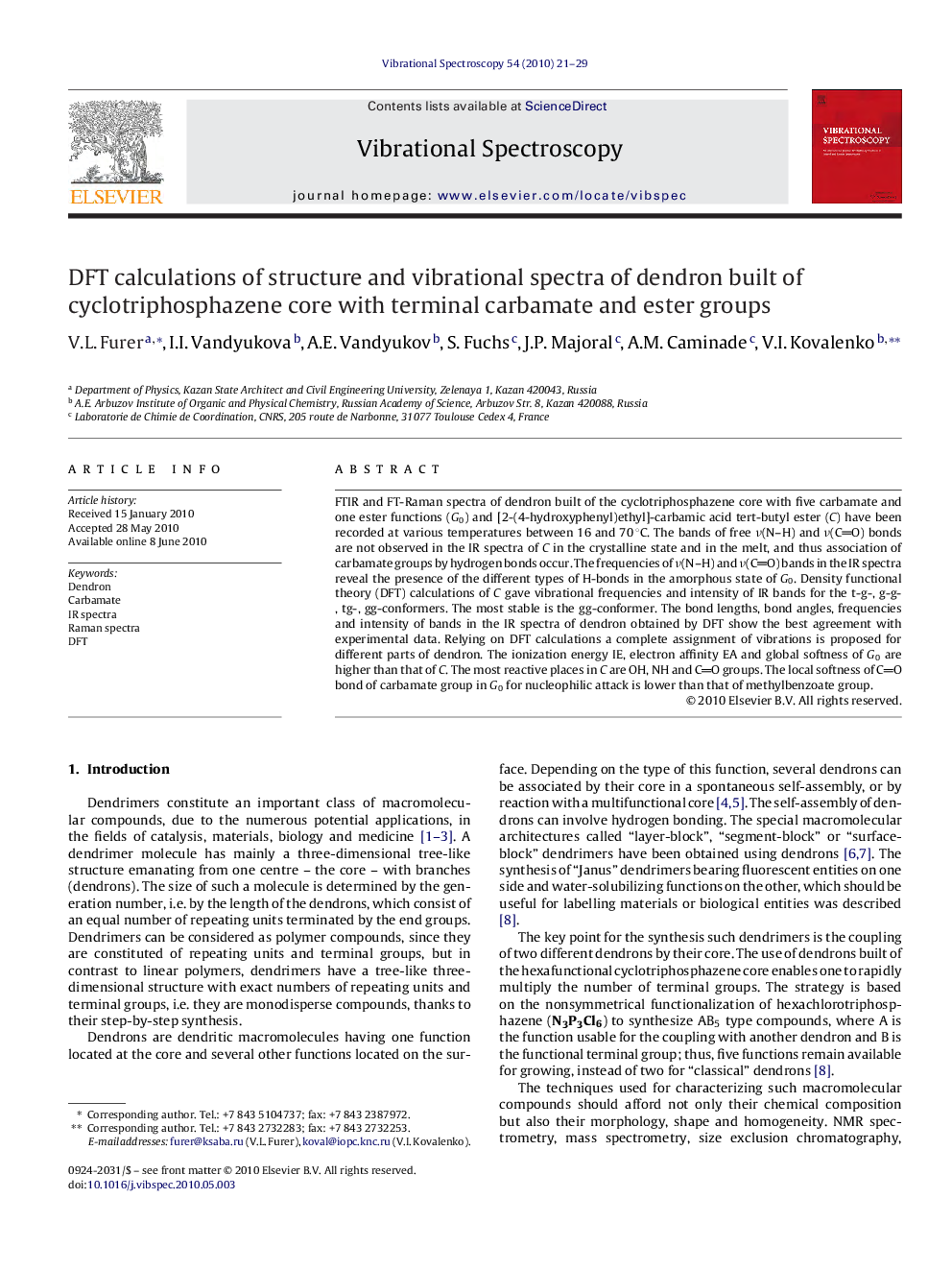| Article ID | Journal | Published Year | Pages | File Type |
|---|---|---|---|---|
| 1250311 | Vibrational Spectroscopy | 2010 | 9 Pages |
Abstract
FTIR and FT-Raman spectra of dendron built of the cyclotriphosphazene core with five carbamate and one ester functions (G0) and [2-(4-hydroxyphenyl)ethyl]-carbamic acid tert-butyl ester (C) have been recorded at various temperatures between 16 and 70 °C. The bands of free ν(N-H) and ν(CO) bonds are not observed in the IR spectra of C in the crystalline state and in the melt, and thus association of carbamate groups by hydrogen bonds occur. The frequencies of ν(N-H) and ν(CO) bands in the IR spectra reveal the presence of the different types of H-bonds in the amorphous state of G0. Density functional theory (DFT) calculations of C gave vibrational frequencies and intensity of IR bands for the t-g-, g-g-, tg-, gg-conformers. The most stable is the gg-conformer. The bond lengths, bond angles, frequencies and intensity of bands in the IR spectra of dendron obtained by DFT show the best agreement with experimental data. Relying on DFT calculations a complete assignment of vibrations is proposed for different parts of dendron. The ionization energy IE, electron affinity EA and global softness of G0 are higher than that of C. The most reactive places in C are OH, NH and CO groups. The local softness of CO bond of carbamate group in G0 for nucleophilic attack is lower than that of methylbenzoate group.
Related Topics
Physical Sciences and Engineering
Chemistry
Analytical Chemistry
Authors
V.L. Furer, I.I. Vandyukova, A.E. Vandyukov, S. Fuchs, J.P. Majoral, A.M. Caminade, V.I. Kovalenko,
